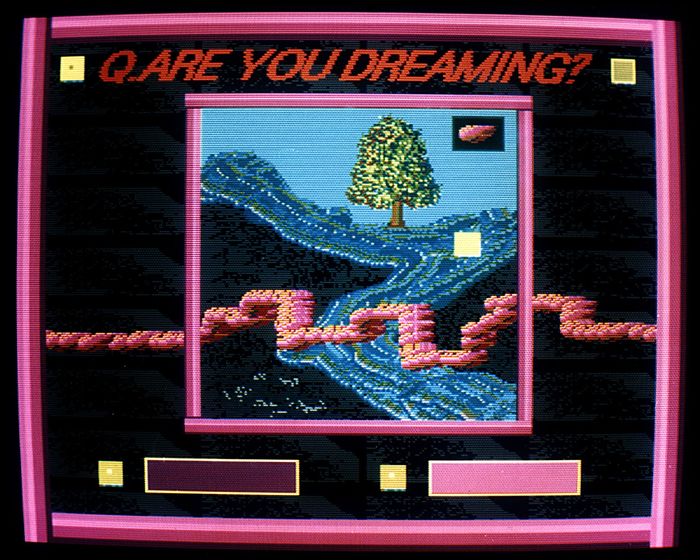The 80s: Photographing Britain – ‘What are you taking pictures for?’
Reviewing the Tate Britain’s most recent exhibition, Loveday Cookson explores how archival photography restores the marginalised in our living memory

Attending this exhibition, I’m acutely aware that I stand on an idealised periphery – one of the few in the room for whom the 80s exists only as an archive. My parents’ recollections of the decade revolve around decanting to the JCR to watch Neighbours and the predominance of perms. Yet these lighter memories are underscored by bearing witness to a catalogue of historical tragedies. The Troubles, the devastating famine in Ethiopia, and the miners’ strike shaped a period steeped in suffering, yet freckled with radical hope: the fall of the Berlin Wall and Live Aid were beacons of possibility. The exhibition swells with this despair but refuses to linger in its tragedies, instead offering moments of community that proved greater than their opposition.
Faces confront you from every corner as you press through the door, turbulent outrage from the Thatcher years plastered across each photograph. The first room indexes the protests that punctuated and narrowly preceded the decade, beginning with the Grunwick dispute, which resisted the continued mistreatment of predominantly female and Asian workers. Whether a product of the stasis of photography or the steadfast resolve of resistance, an immense stillness radiates from David Mansell’s picture of Jayaben Desai. A prominent leader of the strike, Desai stares at the rows of policemen, unphased by their intimidating presence, incredulous at the structures they protect.
In the curator’s words, the room features “protests, uprisings, and acts of violence photographed through an activist lens”. This “activist lens” generates the exhibition’s energy – the movement within the static photographs, and the broader social movements their work continues to inspire.
“These photographs provide an archive of identities so frequently omitted”
Paul Trevor’s Demo organized by Tower Hamlets Defence Committee and Anti-Nazi League (1978) feels as if it could have been plucked from this summer’s broadsheets. Banners emblazoned with “STOP THE NAZIS” serve as a powerful demonstration of community while also standing as a depressing reminder of the persistent strain of racial intolerance that people still fight against today.
While photographing the Battle of Lewisham, Trevor was asked, “What are you taking pictures for?” The answer lies in Vanley Burke’s anecdote, recounting how someone once told him, “Without my photographs, they wouldn’t be able to tell their children about their history”. These photographs provide an archive of identities so frequently omitted, offering positive representations of oppressed minorities while documenting events many would rather forget. We often see our lives as disparate, disconnected from history, but Trevor’s work reminds us that we are part of a continuation – one we must not disrespect by burying to appease our discomfort.

The photographs are a refusal to be forgotten, just as the Miners’ Strike resisted a culture of expendability. John Harris’ Police and Striking Miners at Dawn, Staffordshire encapsulates the entire conflict in a single frame. Industrial cooling towers grey the background, their billowing steam concealing the morning sky, while a row of policemen – arms folded, badges glinting – faces ordinary people. Thatcherism brought about a new industrial reality, with police power inflicted upon any opposition. The images of protest revolve around the necessity of community: through unionisation, the strikers endured 362 days of conflict, and through photography, we preserve proof of their power.
“A dialogue is opened to the death the decade created, honouring the existence of those lost”
Turning a corner, the 80s bursts into life, flooded with bright colours and bold fashion synonymous with a period of social and technological potential – even as many of its most influential figures remained close-minded. The exhibition reflects “contributions to a people’s history”, as described by the curators, focusing on those frequently exiled, erased, or demonised by dominant media. It prompts the creation of alternative expressive spaces.
Sunil Gupta’s “Pretended” Family Relationships pits the hateful language of Section 28 against warm scenes of LGBTQ+ family embrace. The dissonance between the legislation’s rhetoric and the depicted reality of queer love underscores the ignorance behind such prejudiced laws. Gordon Rainsford’s documentation of the AIDS epidemic similarly memorialises the struggle against homophobic rhetoric. ACT UP World AIDS Day, 1 December 1989 captures a protest sign reading “THE TRUTH HURTS BUT AIDS KILLS”. The exhibition refuses to shy away from these truths, however painful, showing a history within living memory while honouring those who should still be here to hold these memories.
The exhibition refuses to be defined solely by tragedy. The communities depicted are shown as more than their oppressions: they are filled with joy, humour, hope – and mundanity. It centres ordinary people in extraordinary circumstances but, amid chaos and violence, there are games of chess, haircuts, nightclubs, and music-making – people simply living.
While so many of the horrors etched into the exhibition feel startlingly contemporary, The 80s: Photographing Britain celebrates the power of people, both in protest and in the radical defiance of simply existing.
Want to share your thoughts on this article? Send us a letter to letters@varsity.co.uk or by using this form.
 News / Candidates clash over Chancellorship25 April 2025
News / Candidates clash over Chancellorship25 April 2025 Interviews / Dr Ally Louks on going viral for all the wrong reasons25 April 2025
Interviews / Dr Ally Louks on going viral for all the wrong reasons25 April 2025 Music / The pipes are calling: the life of a Cambridge Organ Scholar25 April 2025
Music / The pipes are calling: the life of a Cambridge Organ Scholar25 April 2025 News / Cambridge professor paid over $1 million for FBI intel since 199125 April 2025
News / Cambridge professor paid over $1 million for FBI intel since 199125 April 2025 Arts / Plays and playing truant: Stephen Fry’s Cambridge25 April 2025
Arts / Plays and playing truant: Stephen Fry’s Cambridge25 April 2025






